Inground Swimming Pool Maintenance Costs: Chemicals, Electricity, and More
July 25th, 2019
12 min read
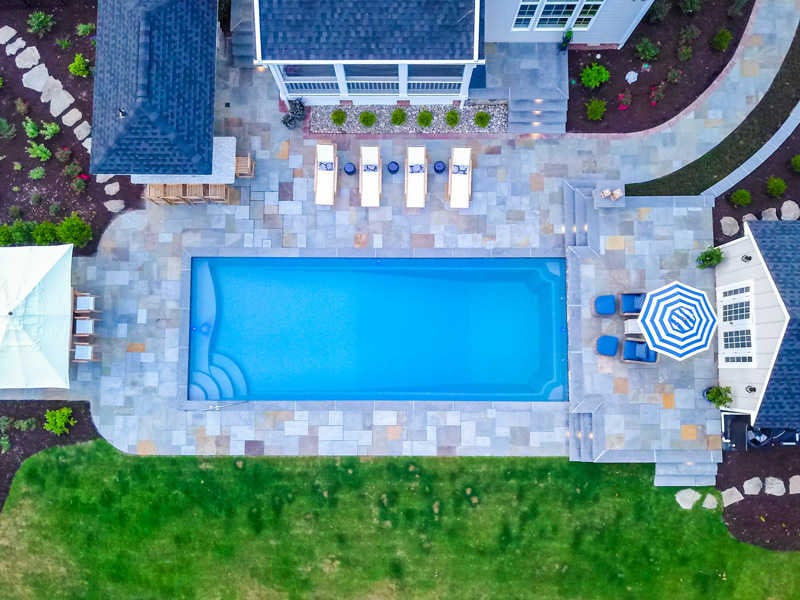
Before getting your swimming pool, you might be asking questions like, “How much does a pool raise your electric bill? What does it cost to get a pool cleaning service? How much will I pay for chemicals?”
These are totally valid questions, and you’re a smart shopper for asking them.
It’s not enough to know that your pool is going to cost you money every year. You deserve to know how much you’re going to have to pay to keep your pool in good shape, and that’s why we decided to write this article.
At River Pools, we specialize in fiberglass pools throughout North America, and we know all about the maintenance costs and requirements for all types of inground pools, be it concrete, fiberglass, or vinyl liner. In this article, we’ll explain the maintenance costs for each type of inground pool, hopefully giving you a true sense of what to expect ahead.
Let’s start by looking at some of the factors that can affect the cost of your pool’s maintenance.
Factors that affect swimming pool maintenance costs
Most pools look pretty similar on the outside, but every pool type is completely different. That difference may be in the materials, the building process, or both. The bottom line is that not all pools will require the same type of care.
Here are some of the main things that can affect how a pool is maintained and how much that maintenance costs:
- Pool type (fiberglass, concrete, or vinyl liner)
- Pool size
- Climate and region
- Age of the pool
We’ll take these factors into consideration over the next several sections.
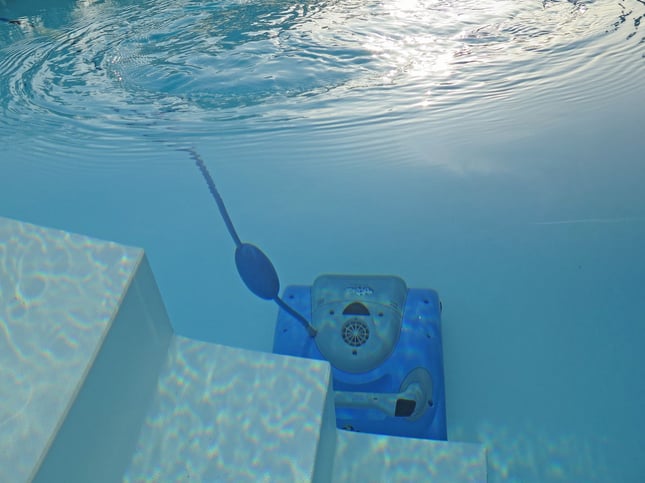
Cost to Maintain a Concrete Pool
As a general rule, concrete pools have the highest cost of ownership of all three inground pool types. The porous surface demands more chemical use and will require you to run the pump/filter for longer periods. Let’s look at some of the yearly and long-term costs of owning a concrete pool.
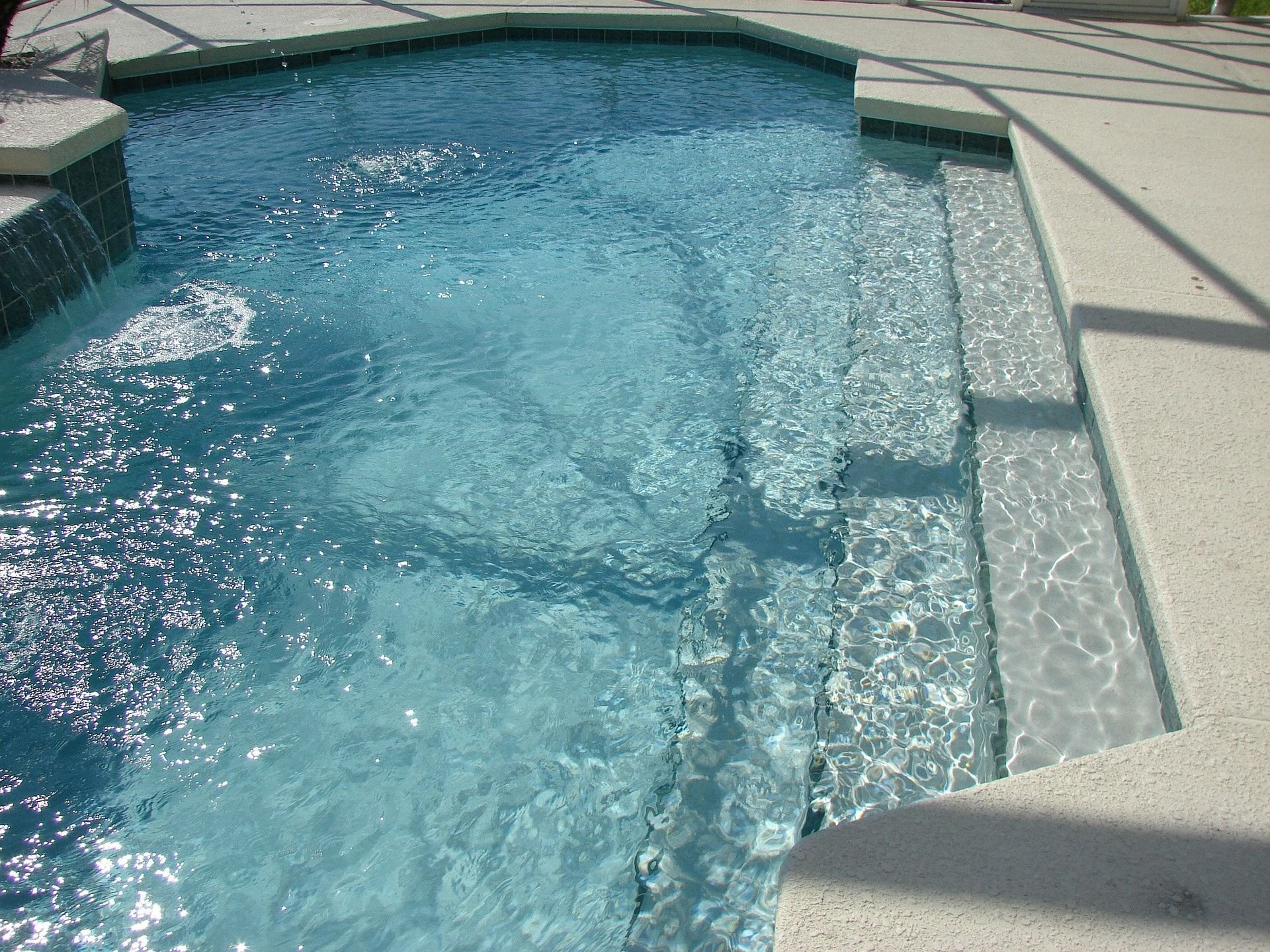
Electric
The amount that your concrete swimming pool will add to your electric bill will depend on the size of your pool and whether you run a heating or cooling pump.
Smaller pools will typically be cheaper to run because they have less water to filter. Similarly, large pools will be more expensive to own and run. The cost will also depend on the type of pump that you have:
- A 2-speed or variable speed pump can cost $60-$100 per month with a concrete pool, depending on the size of your pool and your local electric rates.
- 1-speed pumps (rapidly becoming outdated) can cost $150-$300 per month with a concrete pool, depending on your pool size and the region.
How do you calculate your concrete pool’s electric costs? First, you have to find out how long you need to run the pump to filter the water in the entire pool. This is also called the turnover rate. You can use this simple formula to find the turnover rate for your swimming pool:
.png?width=600&name=Pool%20turnover%20rate%20equation%20(2).png)
Concrete pools require that you filter all of the water in the pool twice per day, so you’ll need to multiply your resulting number by 2 and run your pool for that many hours every day. Why does it need to run longer? The porous surface is perfect for algae growth, so you need to circulate the water more to keep it clear.
Curious about how a pool pump/filter system works? Check out this in-depth guide.
Heating and Cooling
If you use a heating and cooling pump, you can expect to add an additional $50-$250 to your electric bill per month, depending on how large your pool is and how often you heat or cool it.
Chemical Costs for Concrete Pool
Since concrete pools are so prone to algae invasions, they’ll inevitably require more chemicals. The price of your chemicals will depend on how much chlorine (or other chemicals) your pool needs. This will vary based on the results you get when you test your pool's water. The final cost will also be based on the brands that you use.
To give you a rough estimate, expect to spend at least $20 each time you buy chlorine tablets, powder, or liquid. Keep in mind that you may also need other chemicals like pool conditioner. As a whole, you might spend around $750 per year on pool chemicals and related supplies.
What does it cost to maintain a saltwater pool? If you have a saltwater system, you’ll be adding salt to your pool instead of chlorine, which will have a slight impact on the maintenance costs. Be prepared to spend at least $15 per bag of salt and keep in mind that you can use anywhere from half a bag to over 15 bags to maintain the proper chemistry.
Warning: We don’t recommend salt water systems for concrete pools. The salt can be too abrasive on the plaster surface, making it wear out faster.
Cleaning
Aside from chemicals and fishing out leaves and bugs, it’s a good idea to vacuum your concrete pool and brush the entire surface with a steel brush at least once a week. This will make the pool clear and sparkly and keep algae at bay.
If you don’t have the time or energy for all that (it is a lot of work!) you can hire a pool service to clean and maintain your pool chemistry for you. The prices of these pool services will vary by region and by company, but you can expect to pay about $500 per swimming season.
If you do happen to find yourself with a serious algae problem, try this method.
Water
The cost of your water is something that’s tricky to measure since it depends on your activities and the size of your pool. The water in your pool should between the skimmer’s midpoint and within one inch of the top of the opening (see image below) while your pool is open for swimming.
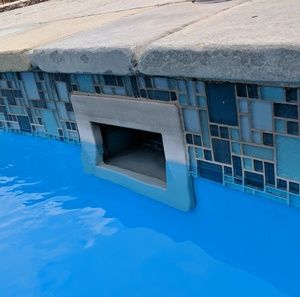
If your water level is getting low, you would typically add water from your garden hose. This will naturally add to your water bill, but the exact amount will vary from pool to pool. You can get a good idea of how much this will cost after you’ve run your pool for a few months.
If, however, you ever need to drain and refill your pool, you’ll be paying a lot more (think at least $100 extra). You’ll also have the option to hire a bulk water delivery service, but this may be a bit pricier.
However, as a general rule, do not drain your pool without first consulting with a professional or having a professional do it for you.
How much does it cost to run a concrete pool per month ?
The monthly cost of your concrete swimming pool will vary by the month. When the pool is open for swimming, you can expect to pay much more for electricity and chemical maintenance than when the pool is shut down for winter.
How much does it cost to own a concrete pool per year?
Overall, you can expect to spend around $1,650 per year to maintain your concrete pool. This also includes costs associated with opening your pool at the start of the season and closing your pool for winter. What this doesn’t include is major maintenance costs like resurfacing, which we cover in the next section.
Long term maintenance costs: acid washing & resurfacing
Unfortunately, running the filter and adding chemicals aren’t the only things you have to think about with a concrete swimming pool. These pools also require significant long term maintenance expenses. These are:
- Acid washing
- Resurfacing
Acid washing your concrete pool rids the surface of spores and prevents algae bloom. Most concrete pool owners do this every 3-6 years, depending on the condition of their pool.
This process requires draining your pool and washing the surface with an acid solution. Unless you really know what you're doing, this job should be carried out by a professional.
You can expect to pay around $500 for this service, plus whatever it costs to refill your pool with water.
Resurfacing your pool can cost $10,000 and more and is usually done every 10-15 years. This consists of replastering, retiling, or reapplying aggregate to the entire surface of your swimming pool. Plaster is the cheapest of all options while tile tends to be the most expensive. You’ll also have to pay to refill your pool once the resurfacing is done.
Cost to Maintain a Vinyl Liner Pool
Vinyl liner pools aren’t the most high-maintenance pools, but they aren’t exactly low-maintenance either. Overall, your vinyl liner pool will require some major maintenance work every few years in addition to paying for electricity and chemicals. Let’s get into this in more detail.
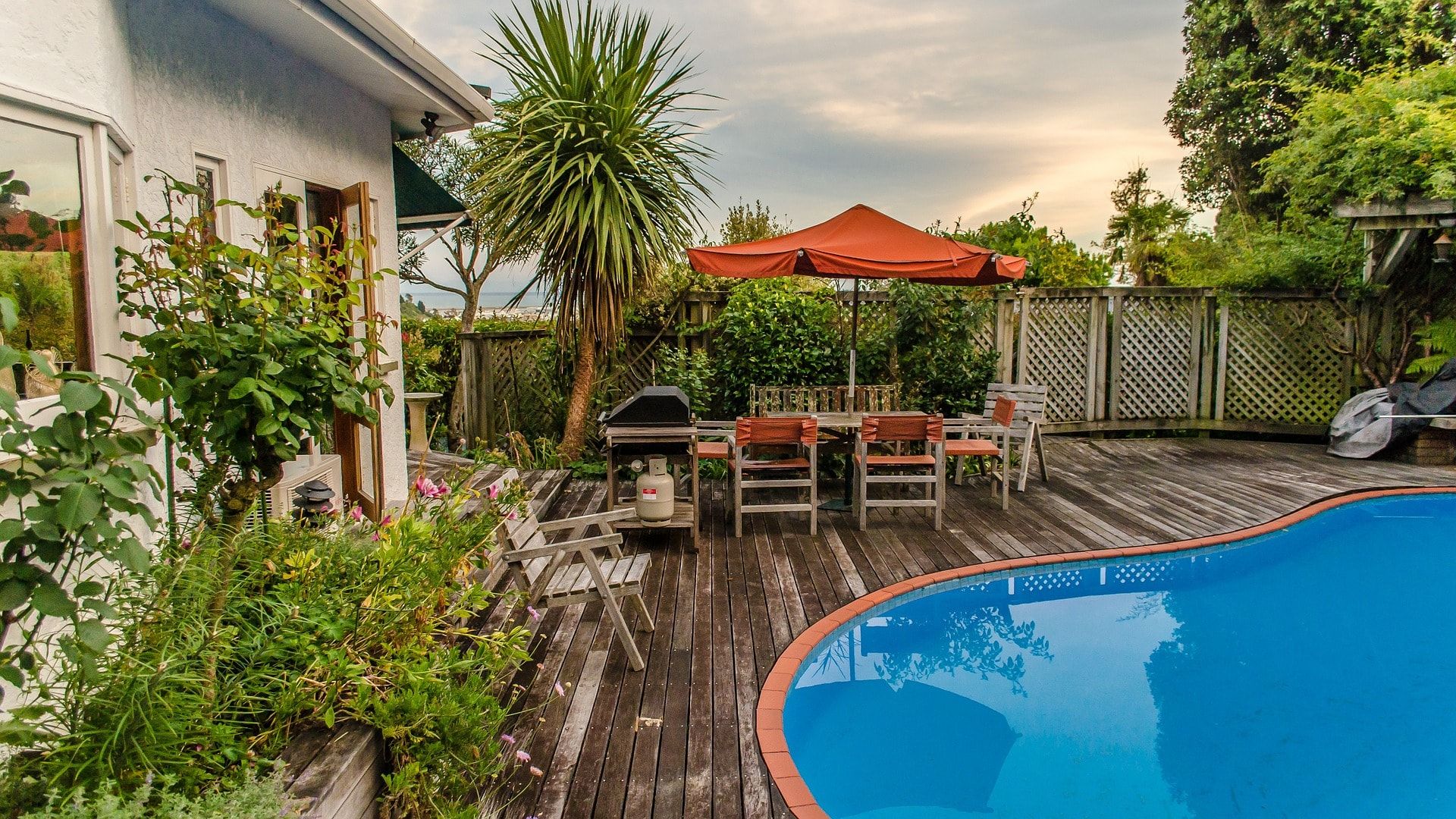
Electric
As with every pool, your electric bill will go up when you get a vinyl liner swimming pool. You’re going to have to run the pump/filter system every day, and that will add around $30-$50 per month if you have a variable speed pump. If you have a 1-speed filter pump you can expect to pay between $75-$150 per month.
The good news is, you only need to filter your pool’s water once a day, unlike a concrete swimming pool. This means that you’ll be able to save some money on electricity.
However, you may need to run your filter longer to deal with any algae collecting in your pool. You can expect to spend about $300 per year on electricity for your vinyl liner pool.
Heating and Cooling
As with a concrete pool, heating or cooling your vinyl liner pool can add an additional $50-$250 per month to your electric bill, depending on how big your pool is and how often you heat or cool it.
Chemical Costs for Vinyl Liner Pool
When it comes to chemicals, vinyl liner pools have an advantage over concrete pools. Algae won’t thrive in a vinyl liner swimming pool like it would in a concrete pool, but it can collect at the seams and become a problem if the pool is not maintained properly. You can still expect to spend around $400 per year on chemicals, which is less than you would spend with a concrete pool.
The amount of chemicals that you need to add will depend on the pool and the area that you live in. Again, you can expect to spend a minimum of $20 every time you buy chlorine for your pool.
What about saltwater systems? We don’t recommend using a salt water system in a vinyl liner swimming pool unless the walls are of made of a polymer material. The metal walls would be vulnerable to corrosion, which could cause major (and costly!) problems in the future.
Cleaning
You’re definitely going to want to vacuum your vinyl liner pool and keep it clear of leaves and debris, just like with any other swimming pool. You should also take a soft, nylon cleaning brush and brush the surface of the entire pool once a week to ensure that algae don’t try to make a home in your pool.
Warning: Whatever you do, don’t scrape the surface of your vinyl liner with hard or sharp tools! You could damage the liner and be forced to replace it sooner than necessary.
Because cleaning your pool is not too labor intensive, you probably won’t feel the need to hire a professional cleaning service, which can save you $500 per year. This, of course, is a convenience that any pool owner can take advantage of to save time and energy.
Water
Just like a concrete pool, you will have to make sure that the water stays at the right level (midway up the skimmer) while the pool is open for swimming. You’ll add more water to it when necessary using your garden hose, and you might lower the water level when it’s time to close the pool for winter.
However, the biggest cost that you will have when it comes to water is refilling the pool. Every few years, your pool’s liner is going to need to be replaced. To do that, you need to drain the pool so that the professionals can install a new one. Filling the pool back up can cost you at least $100, depending on how big your pool is.
Again, it's a good idea to consult with a professional before draining your swimming pool.
How much does it cost to run a vinyl liner pool per month?
The monthly cost of your vinyl liner swimming pool won't be consistent throughout the year. Expect to pay the most when the pool is open for swimming in the spring and summer. When the pool is closed, your maintenance costs will go down significantly.
How much does it cost to own a vinyl liner pool per year?
Aside from periodic liner replacements, you can expect to spend around $700 per year on vinyl liner pool maintenance. This is mostly split between the cost of chemicals and electricity, which will both vary based on the pool and the area in which you live.
Long term maintenance costs
Unfortunately, the vinyl liner itself won’t last forever, and it will have an even shorter lifespan if you don’t keep up with maintenance. Every 5 to 9 years, the pool will need to be drained and the liner will need to be replaced. This can cost you at least $4,000 each time, which can add up to $8,000 - $16,000 total over the course of 20 years.
Cost to Maintain a Fiberglass Pool
Fiberglass pools have the lowest cost of ownership of all three pool types and require the least amount of maintenance. Overall, you will spend a lot less on repairs, resurfacing, electricity, and chemicals than you would with any other pool. Let’s look at this a bit closer.
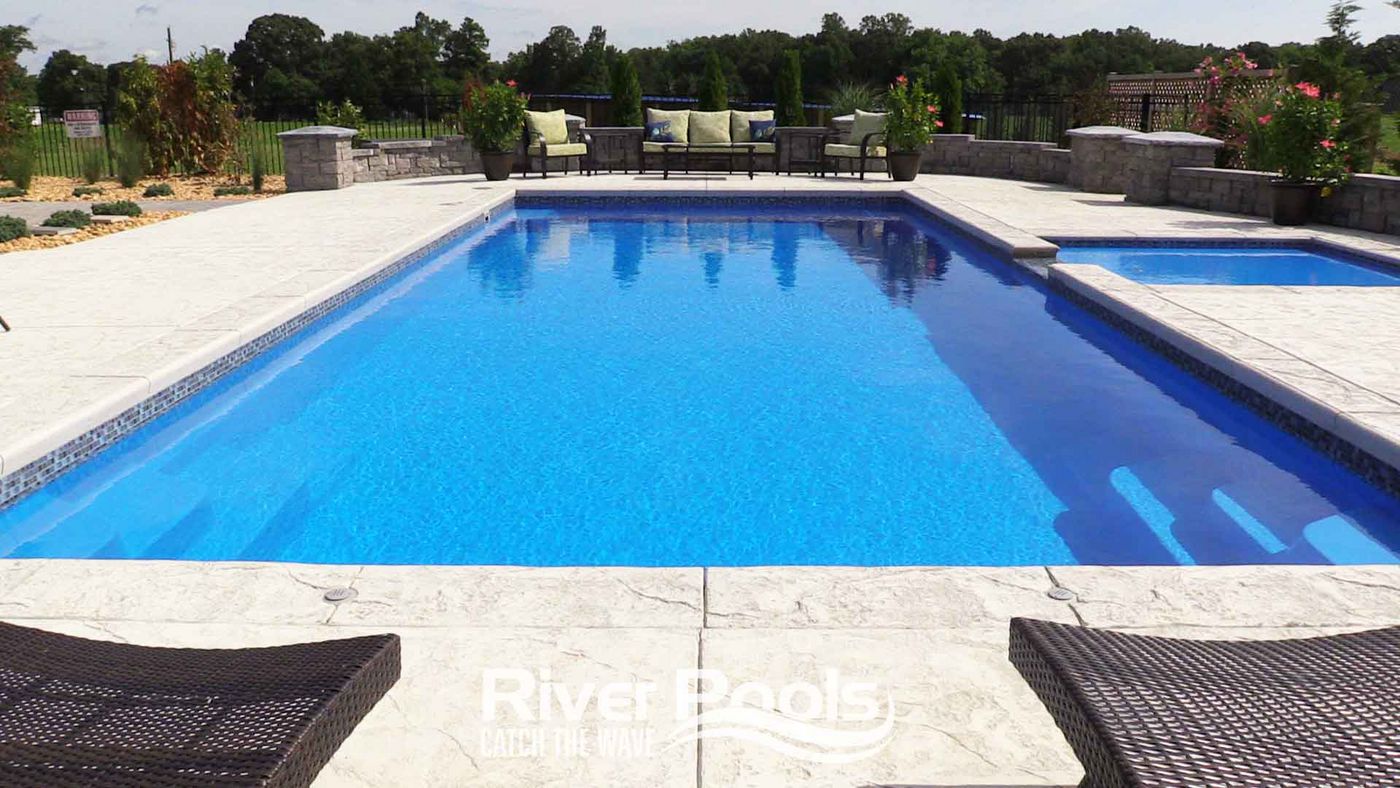
Electric
Unlike a concrete swimming pool, your fiberglass pool will only have to filter the pool water once a day, which saves a lot of time and money. Expect to pay $30-$50 per month for a 2-speed or variable speed filter system and $75-150 per month for a 1-speed system. Overall, you can expect to spend about $200 on electric for your fiberglass pool each year.
We prefer variable speed filter systems because they are adaptable and they save money. That’s why all of our pools are installed with a 2-speed pump system by default. With this type of system, you can even filter your pool water at a low speed 24 hours a day for better water circulation without greatly affecting the cost.
Heating and Cooling
Heating or cooling your fiberglass pool can cost anywhere from $50-$250 per month, depending on the size of your pool and how often you choose to heat or cool it. Some climates are temperate enough to skip the heating and cooling option, but many aren’t. In some areas, heating and cooling can maximize the usability of your pool.
Chemical Costs for Fiberglass Pool
Most people use chlorine tablets, powder, or liquid to sanitize their pool water. The cost can vary depending on the type of pool, and fiberglass pools require the least amount of chemicals to stay in balance. In fact, fiberglass pools use 70% less chemicals than concrete pools.
This is due to the smooth, non porous surface which is referred to as the gelcoat. Without having places to hide, algae can’t take over your swimming pool, and it’s very unlikely that it will become a problem. You can expect to spend about $175 on chemicals for your fiberglass pool each year.
What about saltwater systems in fiberglass pools? If you would prefer to run a saltwater system in your swimming pool, a fiberglass pool would work perfectly. The salt does not damage or corrode the interior of the pool, making it safe to use without any risks of degrading the pool’s surface or damaging the area around it.
The cost to maintain a saltwater pool will vary depending on the size of your pool and the environment around your pool. Expect to spend a minimum of $15 for every bag of salt on top of any specialty maintenance work that you need to have done on your generator and other equipment.
Want to compare saltwater pools to chlorine pools? See our full guide here.
Cleaning
We recommend that you vacuum your pool regularly and keep it clear of debris. We also think it’s a good idea to brush the surface of your pool once a week with a soft, nylon cleaning brush to keep dirt at bay.
Since that’s all you really need to do, there’s no need to hire a professional cleaning service if you don’t want to. Fiberglass pools are much less labor intensive than other pools and can easily be maintained on your own.
Water
As with other swimming pools, you need to keep the water in your fiberglass pool at a proper level. This is typically about midway up the skimmer’s opening. To raise your pool’s water level, you’ll typically use your regular water hose as there would be no real need to call in a bulk water service.
Unlike vinyl liner and concrete pools, there will be very few occasions (if any) on which you will need to drain your fiberglass pool. In fact, we advise you to never drain your fiberglass pool without first consulting with a fiberglass pool expert who can advise you or help you with the process. That means that you won’t have to pay to fill it up again like you would with concrete or vinyl liner pools.
How much does it cost to run a fiberglass pool per month?
As with other pools, the vast majority of your maintenance expenses will be taken care of during the summer months when the pool is open. Electricity, cleaning, and chemical costs may go down once the pool is closed for winter.
How much does it cost to own a fiberglass pool per year?
Overall, your cost to own a fiberglass pool per year will be around $375 between electricity and chemicals. Unless you have major damage to your pool or your aging pool is in need of work, the only other costs that you will have to think about are additional water costs and possibly the cost of accessories like cleaning brushes and pool covers.
To give you a better idea of what your routine will look like, here’s a full breakdown of fiberglass pool maintenance activities.
Long term maintenance costs
Fiberglass swimming pools are extremely durable, but the gelcoat will eventually need to be refinished. However, you will likely use your pool for 20 or 30 years before this needs to be done.
Let’s say you’re 45 years old now. If you install a fiberglass pool today, you won’t need to make any major investments in resurfacing your pool until you’re 65 to 75 years old.
That’s a pretty big period of carefree swimming.
Refinishing the gelcoat on your fiberglass pool is not something that you’ll be doing on your own. When the time comes to resurface it, you’ll definitely be calling in a professional to get the job done.
To give you a visual overview of what these costs will look like across all three pool types, take a look at this chart:
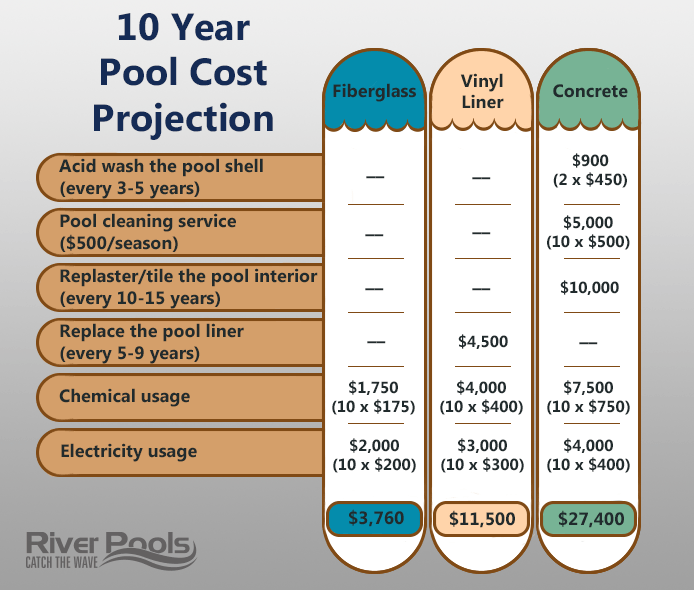
Keep in mind that the cost to maintain an indoor pool may be very different since you will be able to use it all year and won’t have to deal with outdoor elements!
A rule to live by...
If you stay on top of your pool’s maintenance, you can avoid bigger costs later on and the headaches that come with them. After all, keeping your pool in good shape is much easier and cheaper than repairing and restoring a pool that’s been neglected.
We want to leave you with this advice: no matter what kind of pool you get, be sure to take care of it properly. Keep up with the maintenance and your pool will provide you with family fun for many years to come.
At River Pools, we specialize in world-class fiberglass swimming pools for customers across North America. Take a look at our designs and check out our pricing guide today to find out how much your fiberglass pool will cost.
You can also try out our fiberglass pool cost calculator or get a custom quote by filling out our request form.
Before you go, don't forget to download our free ebook below explaining all of the differences between fiberglass, concrete, and vinyl liner pools.
Up Next:
The Ultimate Guide to Inground Swimming Pool Maintenance
Fiberglass vs. Vinyl Liner vs. Concrete Pools: An Honest Comparison
How Much Is My Fiberglass Pool Really Going to Cost?
Marcus Sheridan is a co-founder of River Pools® Virginia and a leading voice in the fiberglass pool industry, known nationally for his commitment to educating homeowners about inground pools. Over the past two decades, Marcus has helped thousands of families confidently navigate the pool buying process with transparency and trust. His straightforward, educational approach has helped make River Pools a go-to resource for fiberglass pool buyers across the country. When he’s not writing or speaking about pools, Marcus helps businesses embrace honest communication to better serve their customers.

